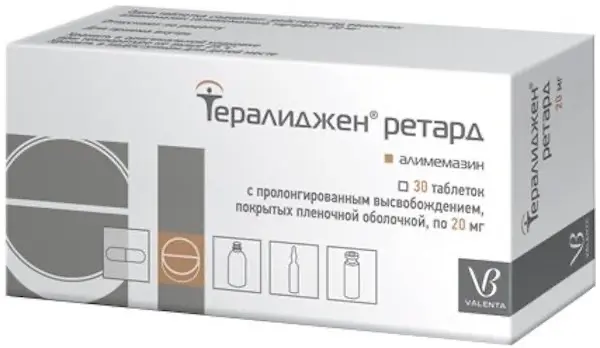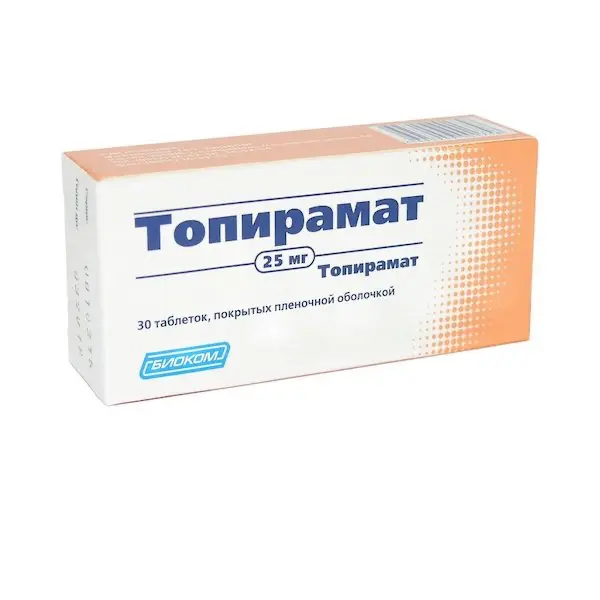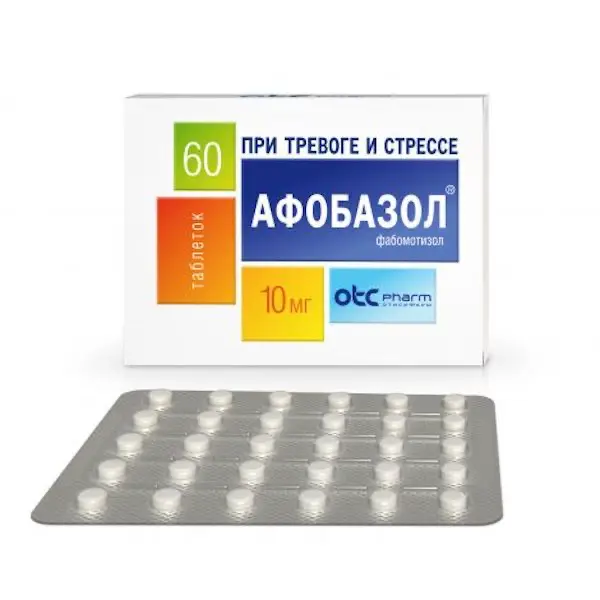Description
Teralizen Retard Pharmacodynamics
It is a derivative of phenothiazine. Alimemazine acts as a mild sedative and anti-anxiety drug, has a positive effect on senestopathy, obsessive compulsive disorder and phobia. It is used for psychosomatic manifestations developing due to neurovegetative disorders, vascular, traumatic and infectious disorders of the central nervous system. Its sedative effect helps to normalize sleep in patients of this category. It has antiemetic and anti-cough activity. Sedative and anxiolytic effect is caused by blockade of adrenoreceptors of reticular formation of the brain stem. Antiemetic and vegetative stabilizing effect is caused by blockade of dopamine D2-receptors of the trigger zone of the vomiting center. Because of its antihistamine activity, alimemazine is used for allergic diseases, especially of the respiratory tract, and for itching of the skin. Alimemazine is more active in antihistamine and sedative action than diprazine. The antipruritic action is due to its effect on type 1 histamine receptors.
Indications
As a sedative (sedative), anxiolytic (anti-anxiety) agent and as a sleep aid:
– Dementia (including dementia due to epilepsy), proceeding with manifestations of psychomotor agitation, anxiety affect (as part of combined therapy);
– Organic anxiety disorder (as part of monotherapy or as part of combination therapy);
– Mood disorders (affective disorders) – as part of combined therapy;
– Generalized anxiety disorder (as part of combined therapy);
– Obsessive-compulsive disorder (as part of combined therapy);
– reaction to severe stress and adaptation disorders (acute reaction to stress, post-traumatic stress disorder, unspecified reaction to severe stress, other reactions to severe stress) – as part of combined therapy;
– Dissociative (conversion) disorders (as part of combined therapy);
– somatoform disorders (somatization disorder, undifferentiated somatoform disorder, hypochondriacal disorder, somatoform dysfunction of autonomic nervous system, stable somatoform pain disorder, unspecified somatoform disorder, other somatoform disorders) – as part of combined therapy for severe anxiety or if standard therapy is not effective;
– unspecified autonomic nervous system disorders, other autonomic nervous system disorders (as part of combined therapy);
– Anorexia nervosa (as part of the combined therapy);
– Emotionally unstable personality disorder (impulsive and borderline types) – as part of combined therapy;
– Hysterical personality disorder, anxious (avoiding, avoiding) personality disorder (as part of combined therapy);
– Persistent change in personality after experiencing a disaster (as part of combined therapy);
– Hyperkinetic behavioral disorder (as part of combined therapy);
– Behavioral disorder restricted to the family (as part of combined therapy when standard therapy is ineffective);
– non-socialized conduct disorder (as part of monotherapy or as part of combined therapy);
– anxiety, agitation and other symptoms and signs related to the emotional state (as part of combined therapy);
– other neurotic disorders (neurasthenia, unspecified neurotic disorder) – as part of combined therapy;
– Insomnia of non-organic etiology (as part of combined therapy if standard therapy is ineffective).
As an anti-allergic agent:
– Pruritus irrespective of location and etiology (pruritus in photocontact dermatitis and solar urticaria, dermatitis, eczema, urticaria, bites or stings by non-venomous insects or other non-venomous arthropods, varicella, measles, Hodgkin’s disease, diabetes, shingles, anal itching, vulvar itching, unspecified anogenital itching) as monotherapy or as part of a combination therapy;
– unspecified allergy (as monotherapy or as part of combined therapy).
Contraindications
– Hypersensitivity to the components of the drug;
– closed-angle glaucoma;
– Prostate hyperplasia;
– Severe hepatic and/or renal insufficiency;
– parkinsonism;
– myasthenia gravis;
– Reye’s syndrome;
– concomitant use of monoamine oxidase inhibitors (MAO);
– pregnancy;
– lactation;
– children under 18 years of age (for this dosage form).
Dosage and administration method
- Orally. Without chewing. The action of the drug is dose-dependent, the dosage is chosen depending on the treatment goals. The drug is prescribed in the required dose once a day or twice a day at 12-hour intervals at the same time.
- In order to determine the tolerability of alimazine, it is possible to use a prolonged form after taking Teralijen in the direct-release dosage form (tablets, solution for intramuscular injection).
- To achieve a vegetative stabilizing effect, 20-60 mg/day.
- To achieve an anxiolytic effect 20-80 mg/day.
- Sleeping and sedative effects can be achieved with a single administration of 20-60 mg.
- For symptomatic treatment of allergic reactions 20-40 mg/day.
- The duration of course treatment may be 2 to 6 months or more and is determined by the physician.
- The highest dose for adults is 500 mg/day, for elderly people (over 60 years) – 200 mg/day.





